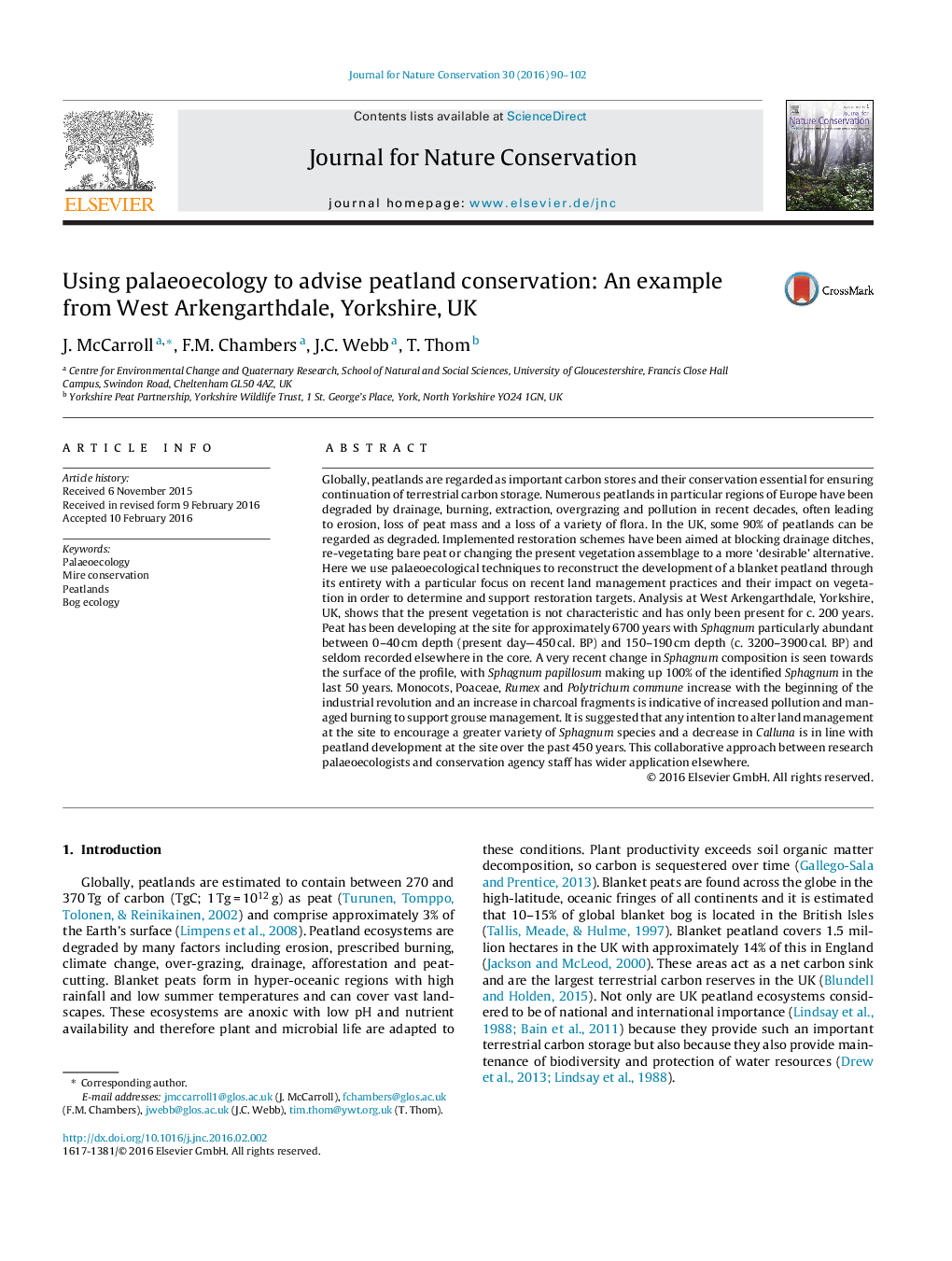| کد مقاله | کد نشریه | سال انتشار | مقاله انگلیسی | نسخه تمام متن |
|---|---|---|---|---|
| 4399725 | 1618538 | 2016 | 13 صفحه PDF | دانلود رایگان |
Globally, peatlands are regarded as important carbon stores and their conservation essential for ensuring continuation of terrestrial carbon storage. Numerous peatlands in particular regions of Europe have been degraded by drainage, burning, extraction, overgrazing and pollution in recent decades, often leading to erosion, loss of peat mass and a loss of a variety of flora. In the UK, some 90% of peatlands can be regarded as degraded. Implemented restoration schemes have been aimed at blocking drainage ditches, re-vegetating bare peat or changing the present vegetation assemblage to a more ‘desirable’ alternative. Here we use palaeoecological techniques to reconstruct the development of a blanket peatland through its entirety with a particular focus on recent land management practices and their impact on vegetation in order to determine and support restoration targets. Analysis at West Arkengarthdale, Yorkshire, UK, shows that the present vegetation is not characteristic and has only been present for c. 200 years. Peat has been developing at the site for approximately 6700 years with Sphagnum particularly abundant between 0–40 cm depth (present day—450 cal. BP) and 150–190 cm depth (c. 3200–3900 cal. BP) and seldom recorded elsewhere in the core. A very recent change in Sphagnum composition is seen towards the surface of the profile, with Sphagnum papillosum making up 100% of the identified Sphagnum in the last 50 years. Monocots, Poaceae, Rumex and Polytrichum commune increase with the beginning of the industrial revolution and an increase in charcoal fragments is indicative of increased pollution and managed burning to support grouse management. It is suggested that any intention to alter land management at the site to encourage a greater variety of Sphagnum species and a decrease in Calluna is in line with peatland development at the site over the past 450 years. This collaborative approach between research palaeoecologists and conservation agency staff has wider application elsewhere.
Journal: Journal for Nature Conservation - Volume 30, May 2016, Pages 90–102
